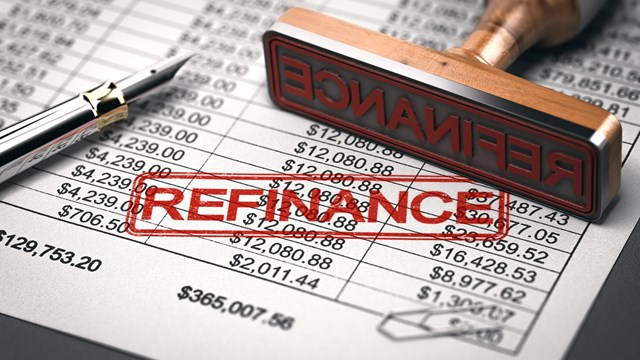
Over the past few years, operating expenses for everything from fuel to labor to the cost of cleaning supplies have been steadily rising—and disrupting co-op and condo association budgets - all over the country. The premiums for properly insuring our homes, which for many is their most important investment, are among the most alarmingly steep increases. Unfortunately, ever-increasing premiums are a fact of life, and the recent upticks can’t be treated as a one-time anomaly. Realistic projections of future insurance costs must now be built into each and every co-op, condo, and HOA board’s annual budget.
What’s Up With That?
While the idea that insurance costs would rise with other goods and services in an inflationary period is not revolutionary, insurance premiums are not subject to the kinds of pressures that say, goods like beef or eggs or vegetables are. There is not a finite number of policies that can be written, and those policies aren’t affected by things like import/export taxes. What then is causing the alarming rise in insurance rates?
“Insurance premiums have been increasing significantly over the past two to two-and-a-half years,” says Todd M. Ross, an insurance expert and agent with One Point Brokerage, a national property insurance agency with offices in New York, where he is based. “This is attributable to various factors, including increased claims frequency and severity, inflation, even supply chain disruptions, and of course, more frequent natural disaster events.”
“As a result of climate change, the number of catastrophic storms we experience has increased, with the resulting claims increasing significantly as well,” says Len Theran, president of Professional Loss Adjusters, a public insurance claims adjuster. Professional Loss Adjusters is a national company with offices in Newton, Massachusetts, where Theran is located. “As an example, a lot of insurance companies in Florida have gone into bankruptcy. The result is that remaining companies are continuingly reducing coverage while increasing premiums. Deductibles are increasing at the same time.”
Alex Seaman, senior vice president with Hub International, an international insurance provider based in Woodbury, New York, explains the current rise in premiums in more depth; “Historically, the insurance industry has had numerous rating cycles based on a number of factors, including interest rates, legal regulations, natural and unnatural disasters, industry profits, and reinsurance requirements. Cycles have been dramatic in many cases, and they have typically lasted 4-5 years or less. For the period from 2010 to 2020, we went through an unprecedented period of industry rate stability. Premiums were largely flat, with relatively small increases or decreases, depending on claims experience, property valuations, and other underwriting criteria.”
“These same premiums began creeping up from 2020 to 2022,” Seaman continues. “The rate of increases jumped starting around the 4th quarter of 2022. These increases continue to impact the real estate insurance market to this day in New York City and elsewhere. Although we are still seeing some renewal programs with relatively small premium increases, most properties are seeing significant premium increases.”
Janet Aronson, a partner with Marcus, Errico, Emmer & Brooks, a law firm located in greater Boston that represents many condominium associations and HOAs, further points out that “These increases are impacting associations whether they have a bad loss history or not. The increases resulting from risk assessment by insurance companies have been passed to all associations.”
Mitigating Rising Costs —What are the Options?
Most co-op and association boards are mandated by their shareholders or owners to hold the line on rising costs and raising monthly common charges or maintenance. Keeping costs under control is the single most important issue for many, both on the board and off. Unlike with certain types of vendors for goods and services, insurance premiums are not something one can bargain over as if in an old-world bazaar. The insurance company calls the shots, take it or leave it. Given that, what options do boards have when it comes to exerting any kind of control over the cost of their insurance premiums?
“Boards have not dropped or stopped buying umbrella policies,” says Ross. “They have been forced to buy lower amounts of excess liability limits. In the past two years most boards have been forced to reduce their umbrella liability limit from $50 million or $100 million to $5 or $10 million in excess liability limits. There are only a handful of insurance programs that can offer high limit umbrellas, and in order to qualify for these programs, there are very strict underwriting guidelines that buildings must be able to meet—and very few do. In New York City, for instance, there are only two programs that can offer a package with property, liability, and high limit umbrella, and if you do not meet their underwriting requirements, boards are faced with buying excess liability in blocks of $5 million. The cost for $5 million in excess liability is often three to five times as much as what the same $50 or $100 million umbrella policies cost in the past. The basic rule of thumb now is that $5 million of excess liability coverage costs between 75%-85% of your primary liability premium.”
“Some boards are choosing to take a higher deductible,” says Theran. “I think that’s a wise choice. It puts pressure on the individual unit owners to buy more of their own insurance for their specific unit while controlling costs to the association. In one respect It’s kind of like ‘robbing Peter to pay Paul,’ though. The increase gets passed along to the unit owner directly, instead of through increases in common monthly charges.”
“My best advice,” says Aronson, “is to be prepared. “Prepared looks to me like making sure that your condo documents do not limit the deductible in the policy, and also that they require that the unit owners must maintain an individual insurance policy for their unit. What is happening to counteract increased premiums is an increase in deductibles. Many associations are going to per/unit deductibles, meaning that in the event of a loss, if the homeowner doesn’t have appropriate coverage, there will be a gap in payout.”
The best short- and long-term strategy for controlling the costs of insurance must be focused on things that the association or corporation can control. The board and their property manager need to be proactive in adopting basic risk management procedures.
“To a great extent, the actual cost of insurance is based on national and global insurance pricing trends impacting the entire industry and reinsurance markets,” Ross reminds us. “By choosing a proactive risk management approach, we address potential flashpoints. Close out open violations that your local building department may have issued, walk the property, address and identify slip-and-fall hazards, inspect the physical plant, and keep up with routine maintenance—don’t let deferred maintenance issues stay outstanding. Improve lighting, install video cameras, keep snow/foul weather logs; note what was done to mitigate it and other hazards that accompany the weather. Routinely fill in potholes and level sidewalks. Make sure stairs and their treads are even and not worn down. Make sure handrails on stairs are secured, and A/C units are properly bracketed into place.”
While claims are inevitable, taking these kinds of proactive measures can help reduce both their frequency and severity. Consistent actions on a daily, weekly, monthly, and annual basis can, over time, help control the occurrence and costs of severe claims. This, in turn, prevents insurance premiums from skyrocketing because of a poor loss history.
Some Regional Differences
While increasing costs are a national problem, insurance is generally regulated on a state-by-state basis, leading to different outcomes and requirements in different places. Theran points out that in New England, coverage is different from other localities. “In New England, coverage is all-in; everything in the building except for the furniture. While in Florida, for instance, the coverage is strictly for common areas; unit owners cover their own buildout from studs in.”
Aronson points out further that “Typically, condominium documents will mandate coverage, but in Rhode Island there is a coverage minimum—though it is very, very low; 80% of replacement cost. There are no actual penalties, but there can be ramifications. The one we see more of is that Fannie Mae and Freddie Mac used to waive the deductibles past a certain amount. That disappeared with the Surfside disaster. Now there’s a five percent cap. Deductibles can’t be more than five percent of total policy. Many now go to per-unit deductibles, which frequently exceed the five percent, so they won’t make a loan.”
According to Ross, “There are various coverages that are mandated under New York State real property law, a given association’s own governing documents, and lenders that require certain basic insurance coverages be in place. Limits for each coverage vary, but in some form or fashion, associations must carry the following mandated insurance coverages: property, liability, equipment breakdown, excess liability/umbrella, fidelity, and D&O insurance. If there are old or in-use fuel tanks, you may be required to also have pollution liability coverage.”
Insurance isn’t just a fact of life for all co-op and condominium communities; it’s a fact of life for everyone. Despite its cost, the cost of a catastrophe is far higher. Forward-thinking boards will work with their insurance broker to find the best possible arrangement and work with their attorney to make sure it’s in line with their governing documents.
A J Sidransky is a staff writer/reporter with CooperatorNews, and a published novelist. He may be reached at alan@yrinc.com.









Leave a Comment